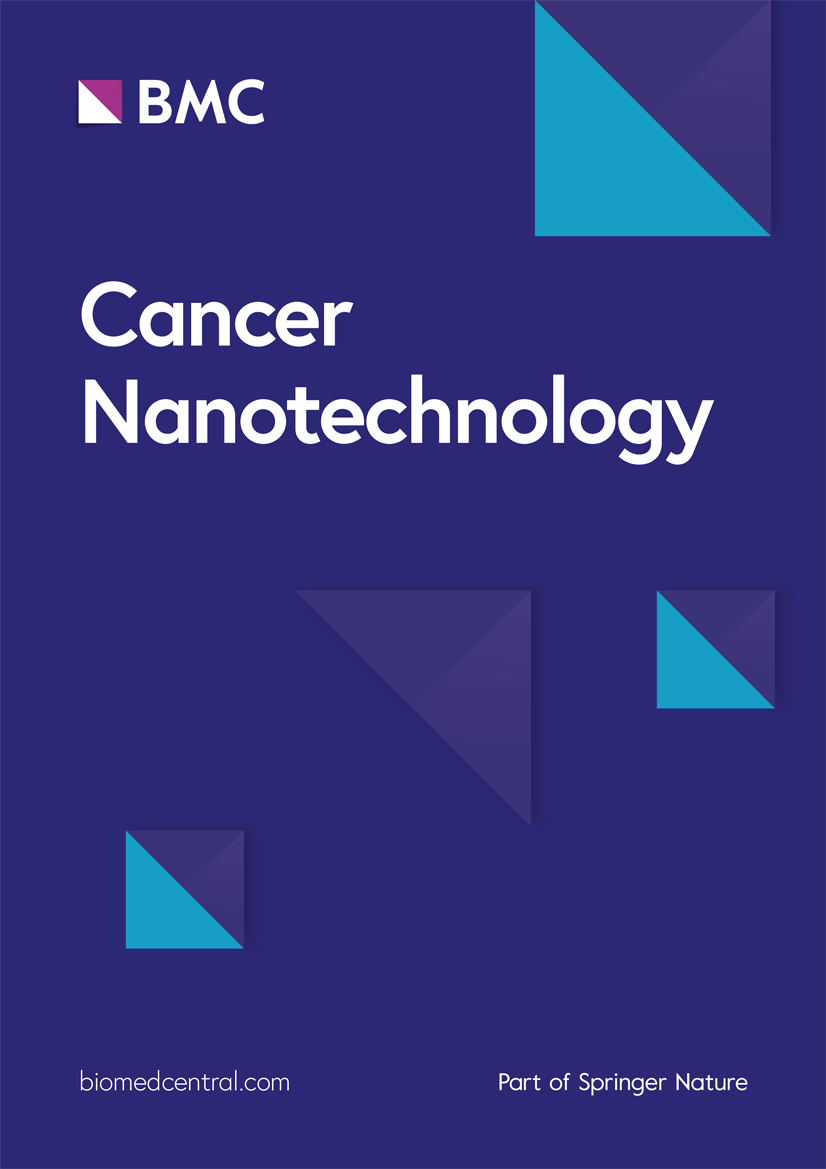Based polymer nanoparticles from bee pollen attenuate non-small lung cancer through enhancement of apoptosis and cell cycle arrest in vivo
IF 4.8
2区 工程技术
Q2 NANOSCIENCE & NANOTECHNOLOGY
引用次数: 0
Abstract
Abstract Bee pollen extract (BPE)-based polymer nanoparticles (BPENP) were fabricated using bovine serum albumin (BSA) and targeted with folic acid and were further characterized. Mice groups are: Group 1 received saline, whereas Groups 2, 3, 4, 5, and 6 received a single dose of urethane, followed by weekly injections of butylated hydroxy-toluene (BHT). After the BHT injection, the mice in Groups 3, 4, 5, and 6 received BPE, Avastin, BPENP, and BPENP + Avastin, respectively. The number and size of tumors were decreased in Group 6 compared to those in the other groups. The ratios of early and late apoptotic cells in Groups 3, 4, 5, and 6 (42.8%, 41.4%, 26.2%, and 45.4%, respectively) were higher than that in the untreated group. The PCNA-labeling indexes (LI)% in tissues and lesions from Group 6 were lower than those in the other groups; on the other hand, the Caspase-3 LI (%) was higher than those in the other groups. No significant differences in HRAS and MAPK levels were observed between Group 6 and the other groups. However, the level of Bax was significantly increased, whereas those of Bcl2 and P21 were decreased in Group 6 compared to those in Groups 4 and 5. According to the results of the current study's in vivo lung cancer mouse model, adjuvant chemotherapy given in conjunction with a polyphenolic substance derived from bee pollen significantly activates the apoptotic pathways as measured by flow cytometry, immunohistochemistry, and apoptotic genes. It also significantly reduces tumor volume and growth as measured by histopathology. Graphical Abstract基于蜜蜂花粉的聚合物纳米颗粒通过增强细胞凋亡和细胞周期阻滞在体内减轻非小细胞肺癌
摘要以牛血清白蛋白(BSA)为原料制备了蜂花粉提取物(BPE)基聚合物纳米颗粒(BPENP),并以叶酸为靶标对其进行了表征。各组小鼠:1组给予生理盐水,2、3、4、5、6组给予单剂量聚氨酯,随后每周注射丁基羟基甲苯(BHT)。BHT注射后,第3、4、5、6组小鼠分别给予BPE、阿瓦斯汀、BPENP、BPENP +阿瓦斯汀。与其他各组相比,第6组肿瘤的数量和大小均有所减少。3、4、5、6组早期和晚期凋亡细胞比例(分别为42.8%、41.4%、26.2%和45.4%)均高于未治疗组。第6组大鼠组织和病变的pcna标记指数(LI)%低于其他各组;另一方面,Caspase-3 LI(%)高于其他各组。第6组与其他组的HRAS和MAPK水平无显著差异。与第4、5组相比,第6组Bax水平显著升高,Bcl2和P21水平显著降低。根据目前研究的肺癌小鼠体内模型,通过流式细胞术、免疫组织化学和凋亡基因检测,辅助化疗联合来自蜂花粉的多酚物质可显著激活凋亡通路。通过组织病理学检测,它还能显著减少肿瘤的体积和生长。图形抽象
本文章由计算机程序翻译,如有差异,请以英文原文为准。
求助全文
约1分钟内获得全文
求助全文
来源期刊

Cancer Nanotechnology
Pharmacology, Toxicology and Pharmaceutics-Pharmaceutical Science
CiteScore
5.20
自引率
1.80%
发文量
37
审稿时长
15 weeks
期刊介绍:
Aim:
Recognizing cancer as a group of diseases caused by nanostructural problems (i.e. with DNA) and also that there are unique benefits to approaches inherently involving nanoscale structures and processes to treat the disease, the journal Cancer Nanotechnology aims to disseminate cutting edge research; to promote emerging trends in the use of nanostructures and the induction of nanoscale processes for the prevention, diagnosis, treatment of cancer; and to cover related ancillary areas.
Scope:
Articles describing original research in the use of nanostructures and the induction of nanoscale processes for the prevention, diagnosis and treatment of cancer (open submission process). Review, editorial and tutorial articles picking up on subthemes of emerging importance where nanostructures and the induction of nanoscale processes are used for the prevention, diagnosis and treatment of cancer.
 求助内容:
求助内容: 应助结果提醒方式:
应助结果提醒方式:


